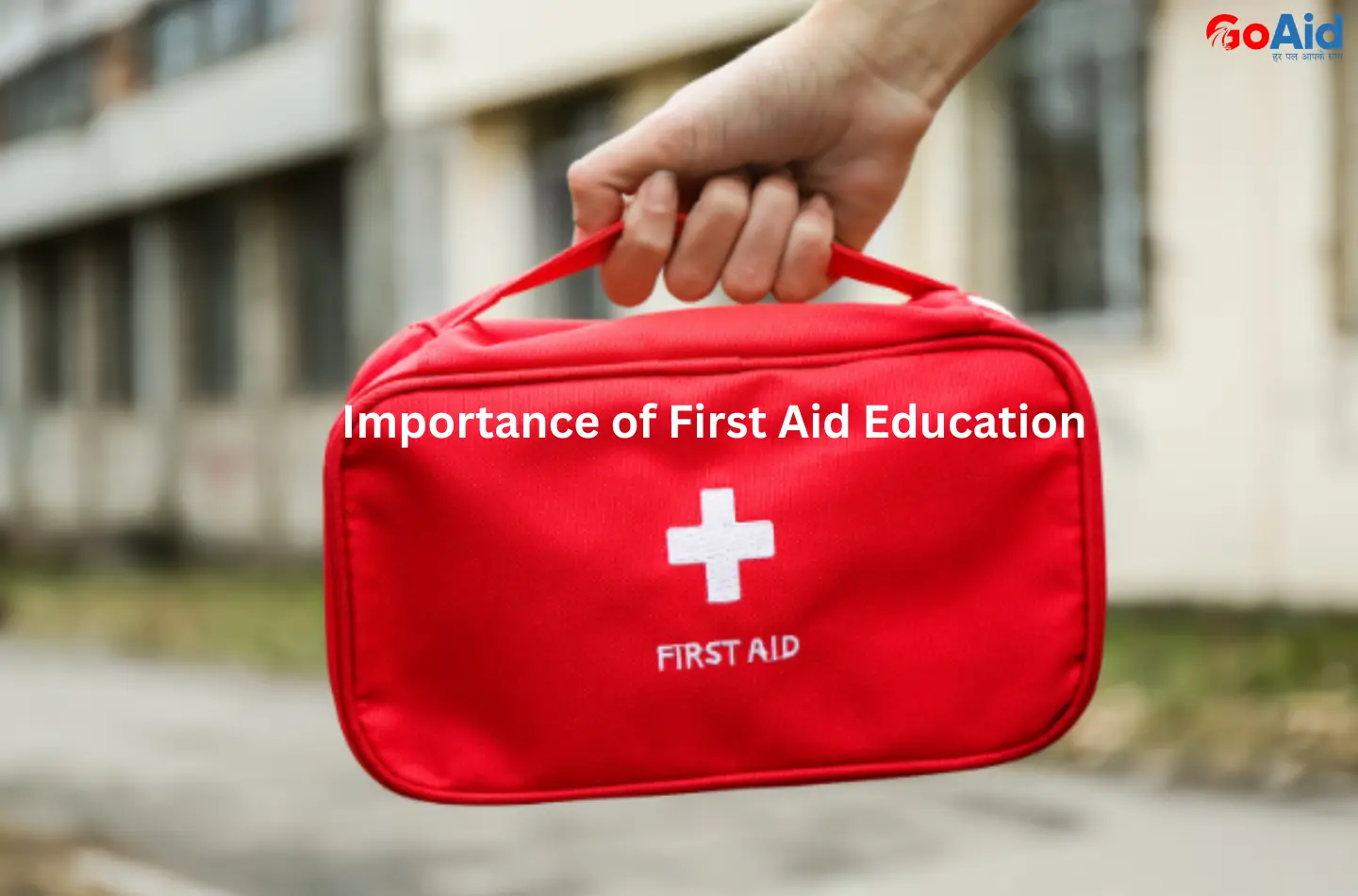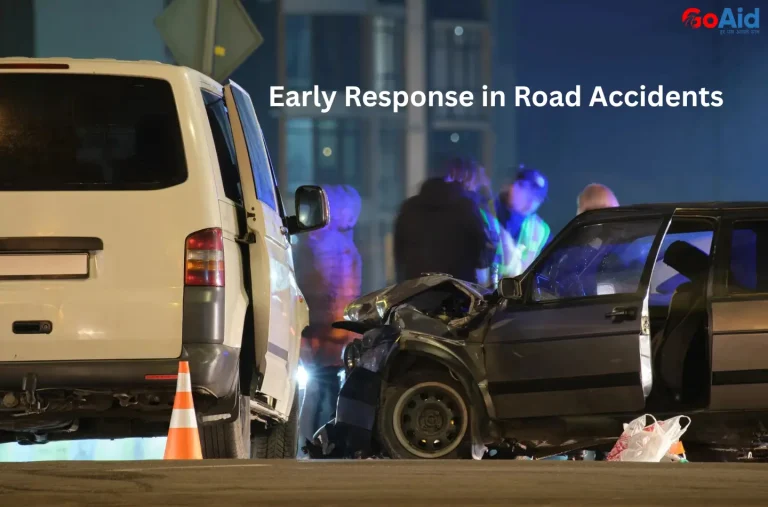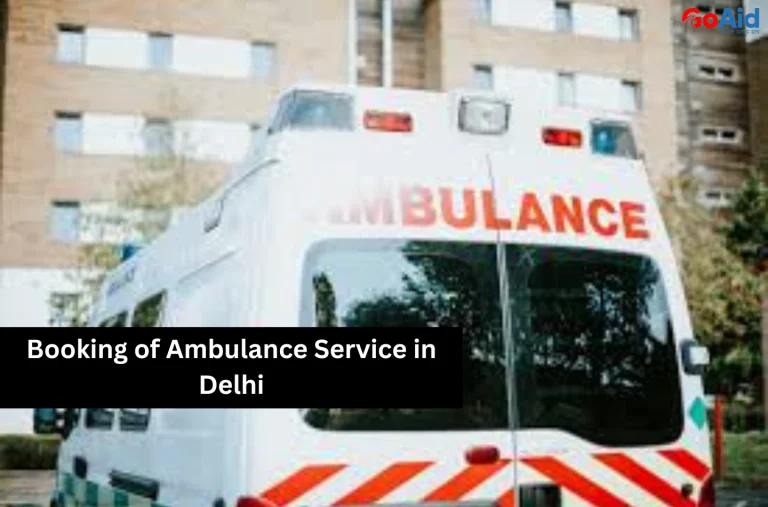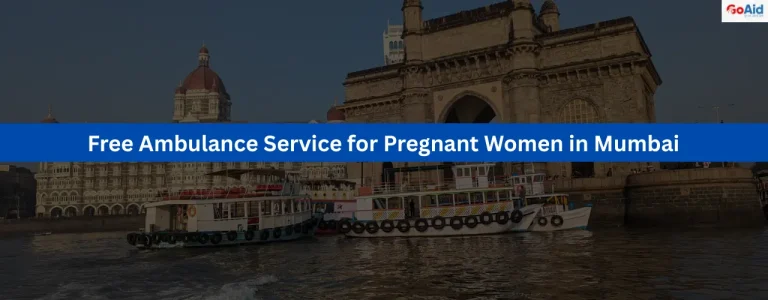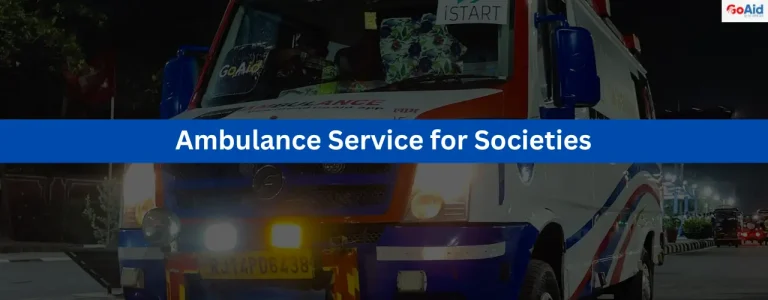In emergencies, every second counts , and knowing basic first aid can mean the difference between life and death. It doesnŌĆÖt matter if itŌĆÖs a road accident, a burn, or sudden cardiac arrest, immediate first aid before an ambulance arrives can help stabilize the patient and prevent further harm.
Unfortunately, many people in India still lack proper first aid knowledge, which limits their ability to respond effectively in such critical moments. Understanding first aid empowers individuals to act confidently and responsibly during medical emergencies.
This is why, in this blog, we have provided you all the details about why first aid knowledge is essential, the situations where it helps most, how GoAid spreads awareness, and how timely response before ambulance arrival can save lives. Are you willing to know about all these points in detail? Then read this blog to the end.
So, letŌĆÖs start ŌĆō
Basic First Aid Everyone Should Know
Basic first aid knowledge is crucial for everyone, as emergencies can happen anywhere, at home, work, or on the road. Knowing simple techniques can prevent injuries from worsening and save lives before professional medical help arrives.
Core skills include CPR (cardiopulmonary resuscitation) for cardiac emergencies, controlling bleeding with pressure and bandages, treating burns, handling choking incidents, and stabilizing fractures. Understanding how to recognize signs of shock, allergic reactions, or sudden illnesses can drastically improve outcomes.┬Ā
First aid also teaches the safe use of tools like splints, slings, and thermometers. GoAid Ambulance emphasizes that even minimal training equips individuals to act confidently in critical situations. This provides vital support before paramedics arrive.
Common Situations Where First Aid is Essential
First aid knowledge can be life-saving in numerous everyday emergencies. Here are ten common situations where basic first aid skills are vital:
- Choking Emergencies
When someone is choking, quick intervention with Heimlich maneuvers or back blows can restore breathing, prevent suffocation, and save lives before professional help arrives.
- Cardiac Arrest or Heart Attacks
Immediate CPR and chest compressions during cardiac arrest can maintain blood flow to the brain and organs, significantly increasing survival chances until an ambulance reaches the patient.
- Severe Bleeding or Cuts
Uncontrolled bleeding can be life-threatening. Applying direct pressure. This uses clean cloths or bandages, and elevating the injured area are critical first aid steps to prevent shock.
- Burn Injuries
First aid for burns involves cooling the affected area. This covers it with sterile gauze, and avoiding harmful substances. Early intervention reduces pain, tissue damage, and infection risk.
- Fractures and Sprains
Immobilizing broken bones or sprains using slings, splints, or bandages prevents further injury, reduces pain, and stabilizes the patient until professional care is available.
- Allergic Reactions or Anaphylaxis
Recognizing symptoms like swelling, hives, or difficulty breathing is essential. Administering antihistamines or an epinephrine injector promptly can prevent severe complications.
- Stroke Symptoms
Immediate first aid involves identifying stroke signs such as facial drooping, arm weakness, or speech difficulty and calling emergency services to minimize brain damage and long-term disability.
- Heatstroke or Hypothermia
Providing appropriate cooling or warming techniques, hydration, and moving the patient to a safe environment can prevent organ damage and serious health risks.
- Seizures
During a seizure. This ensures the personŌĆÖs safety, cushioning their head, and avoiding restraint can prevent injuries. First aid focuses on protection until the seizure ends or help arrives.
- Poisoning or Ingestion of Harmful Substances
Quickly identifying the substance. This prevents further ingestion, and contacting emergency services or poison control are crucial. Immediate first aid can save lives and reduce toxic effects.
How First Aid Helps Before Ambulance Arrival?
First aid is critical in bridging the gap between the onset of an emergency and the arrival of professional medical help. Immediate intervention can prevent a condition from worsening, reduce pain, and even save lives.
For instance, performing CPR during cardiac arrest maintains blood flow to vital organs, while controlling bleeding or stabilizing fractures prevents further injury. Proper first aid also helps manage breathing difficulties, allergic reactions, burns, and shock.
By acting promptly and confidently, a trained individual can provide vital support, reassure the patient, and improve recovery outcomes. GoAid Ambulance emphasizes that early first aid significantly increases survival chances before professional care reaches the scene.
What Are GoAidŌĆÖs Efforts in Spreading First Aid Awareness?
GoAid actively promotes first aid education across India to equip people with essential life-saving skills. Here are their main initiatives:
- Community Workshops and Training Sessions
GoAid conducts regular workshops in schools, offices, and communities, teaching CPR, bleeding control, and emergency response techniques to ensure people are prepared for real-life emergencies.
- Online First Aid Courses
Through their digital platform, GoAid offers accessible online courses and video tutorials. This allows individuals to learn basic and advanced first aid at their own pace.
- Public Awareness Campaigns
GoAid organizes campaigns, social media drives, and awareness programs highlighting the importance of first aid, common emergencies, and the steps to act quickly and safely.
- Collaborations with Educational Institutions
Partnering with schools and colleges, GoAid integrates first aid training into curricula. This helps students and staff respond effectively during accidents or health emergencies.
- Distribution of Educational Materials
GoAid provides pamphlets, guides, and online resources containing first aid instructions, emergency tips, and information about using ambulance services during critical situations.
- Hands-On Demonstrations in Public Areas
By setting up live demonstrations in parks, malls, and workplaces, GoAid shows practical first aid techniques. This encourages immediate application and reinforcing public confidence.
- Promotion of First Aid Apps and Helplines
GoAid promotes digital tools. This includes mobile apps and helplines, guiding users step-by-step during emergencies and enabling faster communication with trained paramedics.
Role of First Responders and Paramedics
First responders and paramedics play a vital role in saving lives during emergencies. They are trained to assess the situation quickly, stabilize patients, and provide immediate medical care before reaching the hospital. Their skills include performing CPR, controlling bleeding, managing fractures, and assisting patients with breathing difficulties or allergic reactions.┬Ā
First responders are often the first point of contact. This provides reassurance to the patient and family while coordinating with ambulance services like GoAid for rapid transportation. Their expertise ensures that critical interventions are delivered promptly.
This reduces complications and improving patient survival rates. By bridging the gap between the incident and hospital care, paramedics are indispensable in emergency response systems.
How to Learn First Aid Professionally?
Learning first aid professionally involves enrolling in certified courses offered by recognized organizations and healthcare institutions. These programs teach practical skills such as CPR, wound care, fracture management, choking response, and handling burns or allergic reactions.
Many courses combine classroom instruction with hands-on training using mannequins, simulators, and real-life scenarios. Some programs also provide specialized training for workplace safety, school emergencies, or public events.
Completing these courses often grants certification. This demonstrates your competency to respond effectively in emergencies. Organizations like GoAid frequently offer workshops, online tutorials, and training programs to help individuals acquire professional first aid knowledge. This ensures they are prepared to act confidently during critical situations.
Conclusion
In conclusion, we have provided you with all the details from understanding the importance of first aid equips individuals to respond effectively during emergencies. From basic techniques to professional training, first aid knowledge empowers people to handle injuries, cardiac arrests, choking incidents, burns, and allergic reactions safely.

